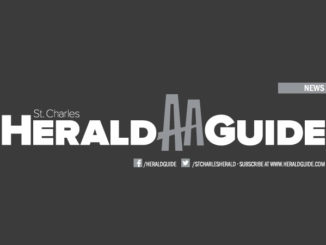
After weeks of speculation on the potential rise in flood insurance rates, St. Charles Parish Public Schools launched their own inquiry on how increased flood insurance premiums will affect their properties and have come back with positive findings.
Scott Fazio, St. Charles Parish Public Schools risk manager, presented his findings in a School Board committee meeting on Monday.
Fazio said at most the school system’s property will see a 5 percent jump in insurance rates next year and will go from paying $200,000 to around $208,000 after provisions of the Biggert-Waters begin in October.
“We fall into three different zones with three different rate increases, but overall we are expecting a $7,000 increase in our flood insurance for next year with a variance of about 10 percent, meaning it could jump to about an $11,200 increase over what we are paying now,” he said.
In contrast to what residents have been told by both FEMA and local government spokesmen, Fazio said that most of the school properties that would see increases are on the East Bank and include Ethel Shoeffner Elementary in Destrehan, New Sarpy Kindergarten School in Destrehan, Destrehan High School, Hahnville High School in Boutte and Norco Elementary.
“Our school properties are going to be hit the hardest (on the East Bank),” Fazio said.
Although under the new map, J.B Martin Middle School, R.J. Vial Elementary and Des Allemands Elementary are all within the Sunset Drainage District, whose levee is not being recognized by FEMA, Fazio did not speak about the potential insurance rates at those schools. Nor did he speak directly about the potential rates at Luling schools even though under the new map Mimosa Park Elementary would be in high risk area and A.A. Songy would be in a floodway.
In fact, Fazio endorsed the new maps and said the parish should approve them as is.
“It would be in their best interest to approve it because if they do not approve it we will be excluded from he national (insurance) pool,” he said.
District 3 Board Member Dennis Naquin said he was particularly concerned about the homeowners in Sunset Drainage District area when he first heard about the new maps.
“When the maps came out, the first thing I thought about was the number. What would be the financial impact on the parish? And No. 2 – what would be the long-range impact on enrollment?” Naquin said. “People are talking about if they get a $20,000 a year flood bill they are mailing their keys in.”
Fazio tried to ease Naquin’s concern about parish depopulation.
“The average rate increase will be about 13 percent in premiums for our residents. That’s based on our predictions right now and the current mapping,” Fazio said. “The highest rate increases will be 25 percent for any subsidized National Flood Insurance property.”
Jay Robichaux, School Board vice-president and District 6 member, inquired as to how Fazio was able to have confidence in his calculations.
FEMA is not releasing final insurance rates until June 1 and the parish has not yet entered into a remapping process with FEMA.
“I actually want to know where you got your number from? We don’t even have these numbers,” Robichaux said.
Fazio said he got the numbers by cross-referencing the proposed flood map with the increases included in the text of the act.
“I actually got it from the act itself, the Flood Insurance Reform and Modernization Act (Biggert-Waters Act), and then it took into account the recent risk mapping of our area,” he said. “The rates will not take effect until October for any local resident and then even the local residents will not begin feeling the effects until two to three years from now and it will be distributed amongst those years.”
District 7 School Board Member Art Aucoin also questioned Fazio’s report.
“What you are telling and what I am hearing are two different things,” Aucoin said.
Fazio said his insights on the insurance rates increases came from recently taking part in meetings meant strictly for FEMA employees.
“It’s not going to be as bad of an increase as what is being put out there. Frankly, the government is behind about $30 billion as far as premiums taken in by the National Flood Insurance Program and what has been paid out–in large part due to Katrina and Superstorm Sandy,” he said. “In order to recoup that they think they (FEMA) are going to just raise rates in certain areas. However, what they are leaning towards, and what the act says, is that it is a very small incremental increase throughout the United States.”
However, Fazio said his projections are subject to change at FEMA’s whim.
“The maps are very fluid, the way they are seen so far and the way the act is written,” Fazio said. “If they (FEMA) wanted to they could change it, but from what I have been told and from what we are reading is it is not in their best interest to do it–home values will drop and people will migrate out of those areas.”




Be the first to comment